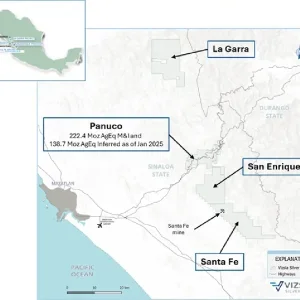One of the main features of land or onshore rigs is portability. They are designed in such a way that the derrick can be moved to other places easily and reuse it for drilling new holes. Components of land rigs can also be moved in units to enable easy connection of the drilling equipment at the sites. Offshore also offer portability and other benefits provided by onshore rigs.
Fixed platform rig: It is one of the most commonly used rigs for offshore drilling. As the name suggests, this type of drilling rigs sit on a fixed structure that is installed at a well site. Although the rigs are not generally part of the permanent structure, they are sometimes left on the platform to meet drilling needs in the future. Most of the drilling rigs of this type consist of a power plant, accommodation facilities, drilling equipment, and life-saving equipment, among others. However, some of them do not feature a power plant and they obtain electricity from the generators of the platform.

Image: Platform B, Dos Cuadras offshore oil field, Santa Barbara.. Photo courtesy of Doc Searls/Wikipedia.
Barge rig: These rigs are floating offshore drilling structures consisting of barges on which drilling equipment is deployed. They are mainly used for drilling purposes in shallow inland bays and locations where the depth of water level is low. After placing the rig at the drillsite, its lower hull is submerged into the sea to rest on the floor. Due to large surface of the lower hull, the rig is prevented from sinking into the soft mud at the bottom of a sea. As a result, the hull offers stability to the drilling platform.
Jackup rig: The offshore drilling rig comes with a buoyant hull that is fitted with many movable legs to raise the hull over the surface of the sea. The buoyant hull allows the transportation of the platform to a drillsite. At the site, the hull can be raised to the desired height above the sea surface. The legs are rested on the sea floor to support the platform. Jackup rigs are self-elevating and come with legs ranging from three to eight. They are mainly used in shallow waters, with a depth of less than 120 meters. Singapore’s Keppel FELS, a subsidiary of Keppel Offshore & Marine (Keppel O&M) is one the major manufacturers of jackup rigs.
Image: Jack up rigs are mainly used in shallow waters. Photo courtesy of suwatpo/FreeDigitalPhotos.net.
Submersible rig: The rigs are used for drilling activity in deeper water and can be floated to drillsites. They are designed to raise its upper hull above the water level. Large pontoon-like structures that support the submersible drilling platform offers buoyancy to tow the unit from one site to another.
Drillship: It is a merchant vessel designed for use in exploratory drilling of oil and gas well in offshore locations. In recent years, many technology advancements have been made to enable drillship usage for deepwater and ultra-deepwater sites. It can act as a platform to perform well maintenance or completion work such as casing and tubing installation, subsea tree installations and well capping. Drillships often have a custom design to meet the requirements of the oil producing companies. As it is a vessel, the offshore rig can be floated to any specific location. Drillships are considered as less stable compared to semi-submersible platforms.
Jacknife: It is onshore rig consisting of a mast that can raised or lowered according to drilling requirements. Using pins, a jackknife can be assembled on the ground. With the help of hoisting equipment, the rig can be raised as a unit.
Portable Mast: The onshore rig is used to drill wells that have moderate depth. They are usually carried to drillsite on wheeled trucks. Portable masts can be raised vertically to a desired height.







